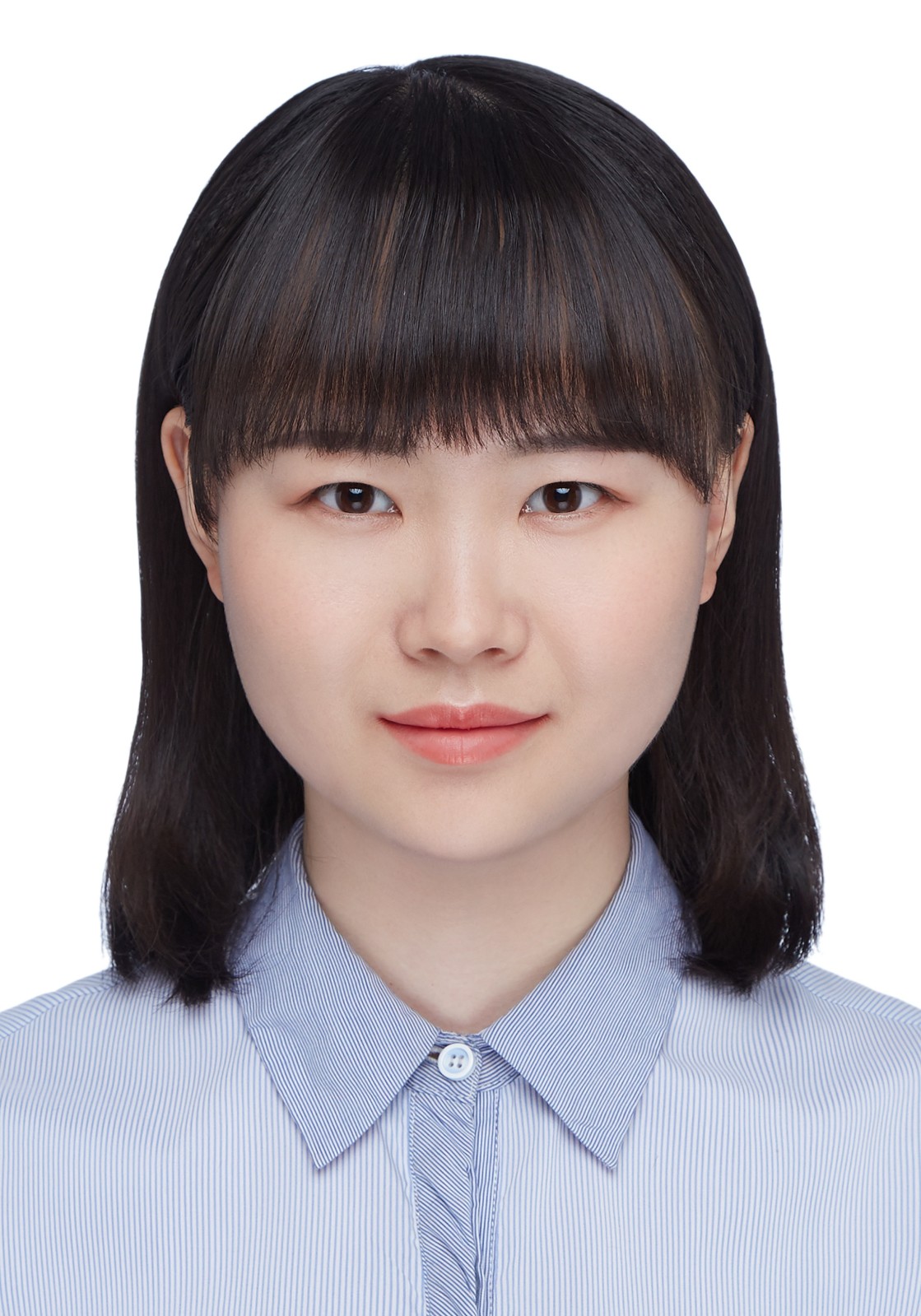
| Prof. Lu Bai, Beijing Normal UniversityStructural pattern recognition, graph machine learning, financial AI, and intelligent educationProfessor Lulu Bai is a Professor and PhD Supervisor at the School of Artificial Intelligence, Beijing Normal University, and Deputy Director of the Ministry of Education Engineering Research Center for Intelligent Technology and Educational Applications. She holds the titles of National Outstanding Youth Fund recipient (NSFC), National Excellent Self-funded Overseas Student (Ministry of Education), and Baidu Global Chinese AI Young Scholar. Selected as “Next Generation Scientist” in the IAPR Newsletter, she earned her PhD in 2015 from the University of York under the supervision of Edwin R. Hancock, FRS (UK Royal Academy of Engineering). Her research focuses on structural pattern recognition, graph machine learning, financial AI, and intelligent education. She has authored/co-authored over 120 publications in top-tier journals/conferences including TPAMI, TKDE, ICML, and NeurIPS, with notable achievements including: 8 ESI Hot Papers/Highly Cited Papers, 2 Best Paper Awards from IAPR and its Italian branch GIRPR, 1 IEEM Distinguished Paper Award from IEEE Management Conference, and 1 Outstanding Poster Award at CCF’s First China Digital Finance Conference. She serves on the editorial boards of TNNLS, PR, and Neural Networks journals, and previously guest-edited PR’s first special issue on financial AI. Her research outcomes have been implemented in practical applications at iFlytek, China Telecom, and others, with select reports formally adopted by the National Development and Reform Commission. Title: Structural Pattern Recognition and Graph Machine Learning: Evolution and Future Perspectives Abstract: Graphs serve as crucial structural data for modeling inter-entity relationships in complex systems, presenting unprecedented challenges to traditional pattern recognition and machine learning due to their inherent complexity. Structural Pattern Recognition (SPR), which effectively excavates and learns complex relational patterns and structural information embedded in graph data, has gained extensive applications across computer vision, finance, social networks, and other domains. Consequently, the development of new theories and methodologies related to SPR has become a highly area in contemporary pattern recognition and machine learning. This report systematically reviews the 40-year evolution of structural pattern recognition, analyzes theoretical characteristics across different research phases, and provides in-depth discussions on two pivotal directions: “Graph Kernel Functions” and “Graph Neural Networks.” It elaborates on their theoretical connections, current interdisciplinary research frontiers, and proposes preliminary perspectives for future investigations. |
Asst. Res. Yufan Liu, Institute of Automation Chinese Academy of SciencesEfficient content security of massive network multimedia Yufan Liu, Assistant Researcher at the Institute of Automation, Chinese Academy of Sciences, Beijing Outstanding Youth, selected for the Youth Talent Support Program, has long been dedicated to the research on efficient content security of massive network multimedia. In theoretical research, she has published over 20 papers as the first author (corresponding author) in international authoritative journals and conferences including TPAMI, IJCV, and CVPR, and has won the Best Application Paper Award at ACCV and the President's Award of the Chinese Academy of Sciences. In terms of the application and transformation of research achievements, she has been granted over 10 invention patents and 3 standards. Her team won the championship in the New Audio-Visual Media Innovation Competition held by the National Radio and Television Administration. She has led more than 20 scientific and technological tasks including sub-projects of the National Key Research and Development Program of China, the Natural Science Foundation of China, the National 242 information security projects, the projects of Cyberspace Administration of China, and the projects of China State Railway Group. The related products and systems she has led have been deployed and applied in enterprises and institutions including the National Computer Network Emergency Response Technical Team/ Coordination Center of China, the Cyberspace Administration of China, China State Railway Group, State Grid, etc. Title: Building Trustworthy AI: From Efficient Models to Secure Deployment Abstract: With the rapid development of artificial intelligence and network communication technologies, both the volume of data and the scale of models have grown exponentially. In this context, how to enhance model performance while ensuring its efficiency and security has become a shared focus of concern for both academia and industry. The efficiency of a model determines "whether it can be practically applied", while its security determines "whether users are willing to use it." This report first explores efficient model computation methods under resource-constrained conditions, such as model pruning and knowledge distillation. These techniques not only significantly improve the model's runtime speed and resource utilization, but also lay a solid foundation for subsequent enhancements in security. However, pursuing efficiency alone is not sufficient; the security of the model must also be considered during the optimization process. To this end, the report further analyzes the major threats faced by large AI models and provides a detailed introduction to our latest research findings on the development of security evaluation tools and attack-defense mechanisms for large models. By constructing a trustworthy AI system that ensures both inference reliability and generation reliability, we aim to achieve a dual guarantee of efficiency and security. |
|
| Assoc. Prof. Aoqian Zhang, Beijing Institute of TechnologyMulti-source heterogeneous data, Internet of Things data, spatio-temporal data, graph data quality and analysis, machine learning, database, blockchainZhang Aoqian is an Associate Professor at the School of Computer Science & Technology, Beijing Institute of Technology. He received his Ph.D. from Tsinghua University in 2018 and primarily focuses on research in databases, data governance, and data mining. He has published over 10 papers in top-tier international computer science conferences and journals (CCF-A, including SIGMOD, VLDB, ICDE, VLDBJ, TKDE, and TODS). He has led one National Natural Science Foundation of China Youth Project and one sub-project under the National Key R&D Program "Blockchain Initiative." In 2024, he was awarded the ACM Beijing Chapter Rising Star Award. Title: Multivariate Time Series Cleaning under Speed Constraints Abstract: Errors are common in time series due to unreliable sensor measurements. Existing methods focus on univariate data but do not utilize the correlation between dimensions. Cleaning each dimension separately may lead to a less accurate result, as some errors can only be identified in the multivariate case. We also point out that the widely used minimum change principle is not always the best choice. Instead, we try to change the smallest number of data to avoid a significant change in the data distribution. In this paper, we propose MTCSC, the constraint-based method for cleaning multivariate time series. We formalize the repair problem, propose a linear-time method to employ online computing, and improve it by exploiting data trends. We also support adaptive speed constraint capturing. We analyze the properties of our proposals and compare them with SOTA methods in terms of effectiveness, efficiency versus error rates, data sizes, and applications such as classification. Experiments on real datasets show that MTCSC can have higher repair accuracy with less time consumption. Interestingly, it can be effective even when there are only weak or no correlations between the dimensions. |
Asst. Res. Zhen Yang, Tsinghua UniversityZhen Yang is an Assistant Researcher in the Department of Computer Science at Tsinghua University. During her Ph.D., she studied under Professor Jie Tang, focusing on large language model and multimodal model inference, as well as multimodal code understanding and generation. She has published eight papers in venues such as KDD, WWW, ICCV, and TPAMI, six of which list her as first author. Her total citations on Google Scholar now exceed 1,300. Title: CogVLM: A Multimodal Model Integrating Visual Experts Abstract: We introduce CogVLM, a powerful open-source visual language foundation model. Different from the popular shallow alignment method which maps image features into the input space of language model, CogVLM bridges the gap between the frozen pretrained language model and image encoder by a trainable visual expert module in the attention and FFN layers. As a result, CogVLM enables a deep fusion of vision language features without sacrificing any performance on NLP tasks. CogVLM-17B achieves state-of-the-art performance on 17 classic cross-modal benchmarks, including 1) image captioning datasets: NoCaps, Flicker30k, 2) VQA datasets: OKVQA, TextVQA, OCRVQA, ScienceQA, 3) LVLM benchmarks: MMVet, MMBench, SEED-Bench, LLaVABench, POPE, MMMU, MathVista, 4) visual grounding datasets: RefCOCO, RefCOCO+, RefCOCOg, Visual7W. Codes and checkpoints are available at https://github.com/THUDM/CogVLM. |
|



